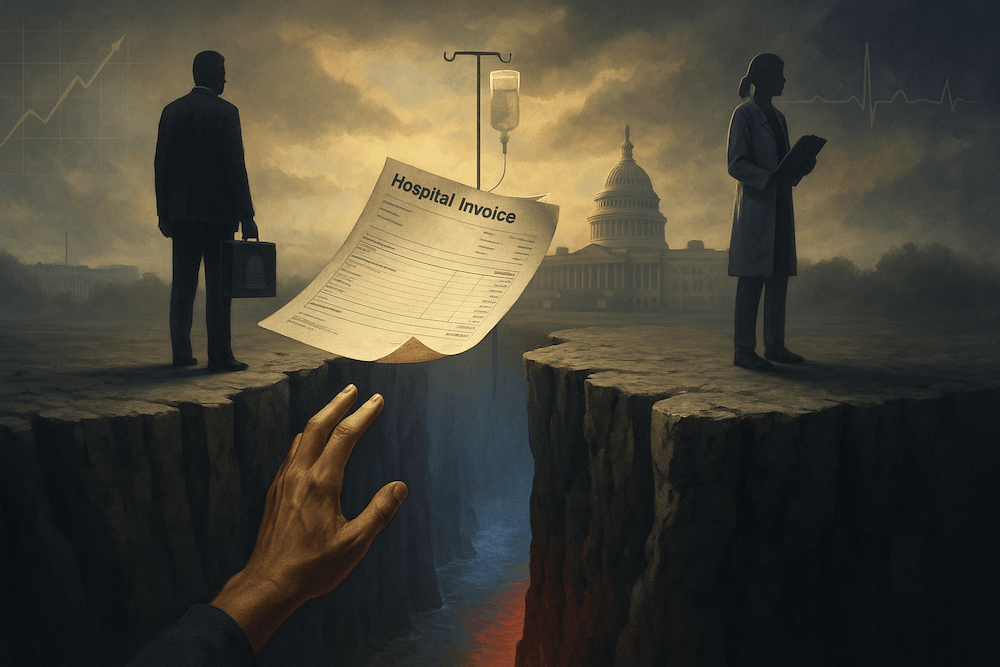
Posted June 24, 2024
By Matt Insley
Six Budget-Friendly U.S. Cities
A longtime reader responded to our “Reverse ATM” issue last week.
He writes: “Matt, as an interesting counterpoint, I was traveling in New Mexico last month, and stopped in a cafe in a small town.
“When I went to check out I saw a sign on the register: ‘$2.50 surcharge for credit cards. The fees are eating us up.’
“I paid cash with a smile and a generous tip for great food and service.”
My man! Love it…
Switching gears, another reader writes her firsthand account of inflation in the 1980s: “I bought a house with an adjustable-rate mortgage (ARM), starting at 12% interest which quickly climbed to 21%. I went bankrupt shortly after. No jobs. Really bad times.
“A few years later, we in real estate thought 12% was a really good deal! And a few years ago, 2-3.5% mortgage interest rates were amazing for us in real estate.
“I’ve been in the business for 40 years, and I generally lost money when dems were in office (facts hurt).”
Since our contributor has been in the real estate business for four decades, she undoubtedly remembers when mortgages went through stringent underwriting.
Including the following blast from the past…
Send your opinions to, feedback@newsyoucanacton.com
Your Rundown for Monday, June 24, 2024...
28/36 Rule
On Saturday, my colleague Emily Clancy wrote the following short piece at Paradigm Pressroom’s 5 Bullets…
These days, Americans who aspire to home ownership face twin obstacles: high home prices plus high mortgage-interest rates. (Add a third obstacle to the list: a drastic income deficit.)
In fact, according to a recent Harvard study, fewer than 6% of renters today can afford to buy an average-priced U.S. home.
Considering a median price tag for a home was $389,400 in the first quarter of 2024…
With just a 3.5% down payment — and earmarking 31% of monthly income to housing — a U.S. household would need an annual income of $120,000 in order to purchase a median-priced home.
“That's about $45,000 more than the typical household earns each year ($74,755),” says an eye-opening article at real estate-centric publication Clever Real Estate in April.
But if you remember the traditional “28/36 rule” for home buying…
To be considered truly affordable, no more than 28% of a household’s gross monthly income should be allocated to housing — with no more than 36% of monthly income allocated to all debt.
Take, for example, the average home price in Tampa, Florida: $361,177. Playing by the “28/36 rule” (with a 20% down payment ), a household would need to earn $106,116 each year.
“But the median household in Tampa earns just $69,290 per year — about $37,000 short of comfortably affording the median home,” Clever Real Estate says.
And similar scenarios play out in 44 of the 50 largest U.S. metro areas.
As a matter of fact, there are only six cities in the country — Pittsburgh, Cleveland, St. Louis, Memphis, Indianapolis and Birmingham — where the median earner can afford a median-priced home.
It’s a disgraceful situation brought on by high prices — and inflation — not seen in 30 years.
A few questions for readers today..
- How has the housing affordability crisis affected you or people you know?
- Some argue that the current housing market is creating a permanent renter class. Do you agree or disagree?
- Do you believe the “28/36 rule” is still relevant in today's economy?
As always, we look forward to your feedback!
Market Rundown for Monday, June 24, 2024
The S&P 500 is down just a fraction of a percent to 5,460.
Oil is down 0.50% to $80.32 for a barrel of WTI.
Gold is up 0.30% to $2,339 per ounce.
But Bitcoin is down 4.40% to $61,270.
Send your comments and questions to, feedback@newsyoucanacton.com

Trump's 2025 Report Card - Honest Grades
Posted December 22, 2025
By Matt Insley

Jim Rickards: How America Falls
Posted December 19, 2025
By Matt Insley

2026, Uncovered
Posted December 17, 2025
By Matt Insley

I ❤️ Silver
Posted December 15, 2025
By Matt Insley

A Silver Bug Moment
Posted December 12, 2025
By Matt Insley
